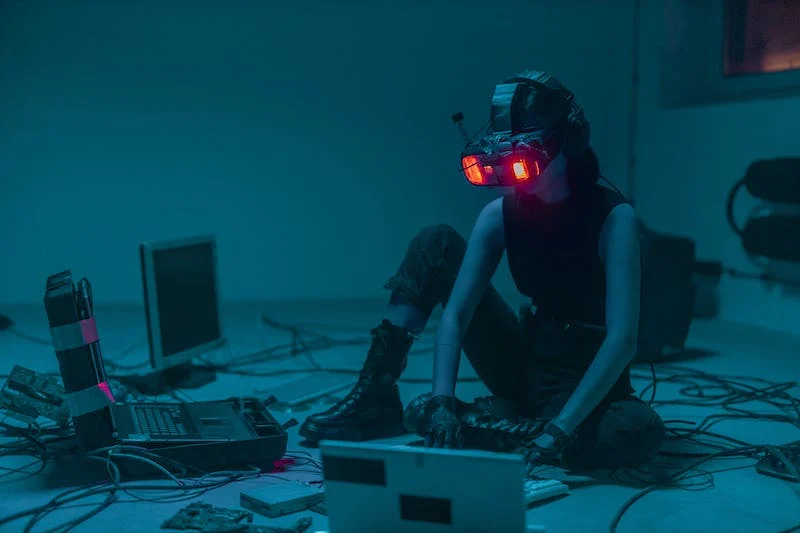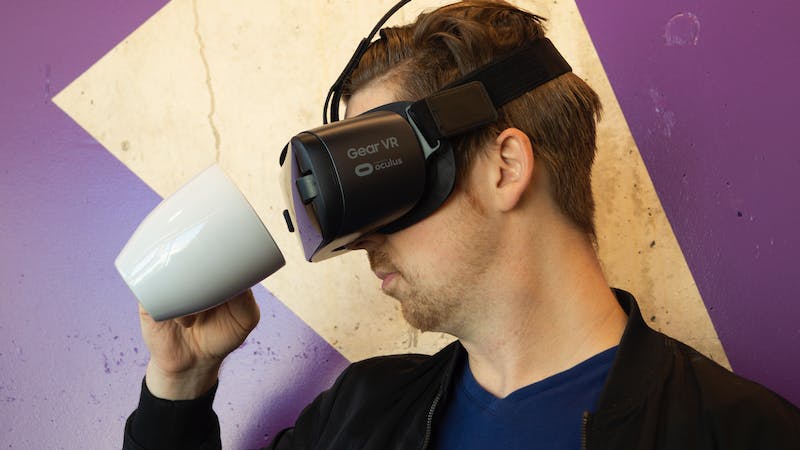What are VR games?
Virtual Reality (VR) games are video games that are designed to be played in a virtual reality environment. VR technology creates an immersive and three-dimensional computer-generated world that players can interact with using specialized VR hardware, such as VR headsets and motion controllers. These games aim to provide players with a sense of presence, where they feel like they are physically inside the game world rather than just observing it on a screen.
Key components of VR games include:
- VR Headsets: These are the primary hardware devices used in VR gaming. They typically consist of a high-resolution display for each eye, sensors to track head movement (head tracking), and sometimes built-in audio and microphone systems. Popular VR headsets include the Oculus Rift, HTC Vive, PlayStation VR, and Oculus Quest.
- Motion Controllers: These hand-held devices are used to track the position and movement of the player’s hands in the virtual world. Motion controllers allow players to interact with objects and environments in the game using gestures and motions, adding a level of physicality to the experience.
- 3D Audio: Many VR games incorporate 3D audio technology to create a realistic soundscape. This means that sounds are positioned in the virtual space around the player, enhancing immersion by providing spatial audio cues.
- Room-Scale Tracking: Some VR setups allow for room-scale tracking, where sensors or cameras placed around the play area track the player’s movement in real-world space. This enables players to physically move around and interact with the virtual environment.
- Haptic Feedback: To further enhance immersion, some VR systems incorporate haptic feedback devices that provide tactile sensations to the player, such as vibrations or force feedback.
VR games can encompass a wide range of genres, from action and adventure to simulation and puzzle games. They offer a unique and immersive gaming experience that can be both physically and emotionally engaging. As VR technology continues to evolve, developers are creating increasingly sophisticated and realistic VR games, making it an exciting and growing segment of the gaming industry.

Technical analysis of VR games
Technical analysis of VR games involves evaluating various aspects of the game’s technology and performance to ensure a smooth and immersive virtual reality experience for players.
- Frame Rate: Maintaining a high and consistent frame rate is crucial in VR to prevent motion sickness and maintain immersion. VR games typically aim for 90 frames per second (FPS) or higher to provide a comfortable experience. A lower frame rate can lead to motion blur and discomfort.
- Resolution and Graphics Quality: VR headsets have displays with specific resolutions, and VR games should be optimized to make the most of the available hardware. Higher resolutions and better graphics quality contribute to a more immersive experience but require more processing power.
- Latency: Low latency is essential in VR to minimize the delay between player actions and the corresponding feedback in the virtual world. High latency can lead to motion sickness and a sense of disconnect between the player and the game.
- Optimization: VR games must be optimized to run smoothly on a variety of hardware configurations. Developers should employ techniques such as dynamic level of detail (LOD), occlusion culling, and efficient rendering pipelines to maintain performance.
- Comfort Options: Many players have different comfort preferences in VR. Games should offer various comfort settings, such as teleportation or smooth locomotion, adjustable field of view, and comfort vignettes to accommodate different player comfort levels.
- Tracking Accuracy: VR tracking systems must provide accurate and reliable tracking of the player’s head and hand movements. Calibration and tracking quality are essential to maintain the illusion of presence.
- Audio Quality: High-quality spatial audio enhances immersion in VR. The game should use 3D audio techniques to position sound sources accurately in the virtual environment.
- Input Devices: VR games should make efficient use of motion controllers and other input devices to enable natural and intuitive interactions within the virtual world.
- Load Times: Long loading times can disrupt the immersive experience. Developers should aim for fast loading and scene transitions to minimize player downtime.
- Content Consistency: Consistency in art style, performance, and interaction mechanics across the VR game is vital to maintain immersion.
- Testing on Multiple Hardware Platforms: Developers should test VR games on various VR headsets and configurations to ensure compatibility and optimal performance across a range of devices.
- Updates and Patches: Ongoing support and updates are essential to address bugs, improve performance, and add new features or content.
- Comfort and Safety: Considerations for player comfort and safety are essential, including options for seated or standing gameplay, clear warning labels for intense experiences, and built-in breaks for long play sessions.
Technical analysis of VR games is crucial for delivering a high-quality and enjoyable virtual reality experience. Developers must balance graphical fidelity with performance optimization to create immersive VR worlds that are accessible to a broad audience. Continuous testing, user feedback, and updates are key to refining the technical aspects of VR games over time.
Famous VR game
Virtual Reality (VR) gaming has seen the development of various game types and genres. Some of these have gained significant popularity and recognition in the VR gaming community.
- First-Person Shooters (FPS):
- Superhot VR: This unique FPS game features time manipulation mechanics where time moves only when the player moves, creating a strategic and intense experience.
- Pavlov VR: A multiplayer VR shooter with a focus on realism and tactical gameplay.
- Survival Horror:
- Resident Evil 7: Biohazard: The popular Resident Evil series introduced a VR mode that brought intense horror experiences to VR players.
- AFFECTED: The Manor: A haunted house-style VR game designed to scare and thrill players.
- Puzzle and Adventure:
- Moss: A charming puzzle-platformer where players guide a small mouse named Quill through a magical world.
- I Expect You to Die: A spy-themed puzzle game where players must solve various challenges to survive deadly situations.
- Simulation and Sandbox:
- Beat Saber: A rhythm game where players slice through blocks to the beat of music using lightsabers.
- Job Simulator: A comedic simulation game that humorously depicts mundane tasks in a world where robots have taken over jobs.
- Racing and Driving:
- Project CARS 2: A realistic racing simulator offering an immersive driving experience in VR.
- Dirt Rally: A rally racing game that brings the excitement of off-road racing to VR.
- Exploration and Adventure:
- No Man’s Sky VR: This open-world exploration game allows players to explore a vast, procedurally generated universe in VR.
- The Elder Scrolls V: Skyrim VR: The beloved RPG Skyrim is available in VR, allowing players to immerse themselves in the epic fantasy world.
- Sports and Fitness:
- BoxVR: A fitness-focused rhythm game that combines boxing workouts with music and VR immersion.
- Eleven: Table Tennis VR: A realistic table tennis simulator that offers a lifelike ping pong experience.
- Multiplayer and Social:
- VRChat: A social platform that enables users to interact, create, and share content in a virtual world.
- Rec Room: A multiplayer VR game that offers a wide variety of activities, from sports and minigames to social interaction.
- Horde and Wave-Based Shooters:
- Arizona Sunshine: A zombie-themed shooter that offers both a single-player campaign and cooperative multiplayer modes.
- Space Pirate Trainer: An arcade-style shooter that pits players against waves of futuristic enemies.
- Flight and Space Simulation:
- Elite Dangerous: A space exploration and trading simulator that offers an expansive galaxy to explore in VR.
- Star Wars: Squadrons: A space combat game set in the Star Wars universe, offering intense dogfights in VR.
These are just a few examples of the famous VR game types that have emerged in the VR gaming landscape. VR continues to evolve, and new genres and experiences are constantly being developed, expanding the possibilities for immersive gaming.




